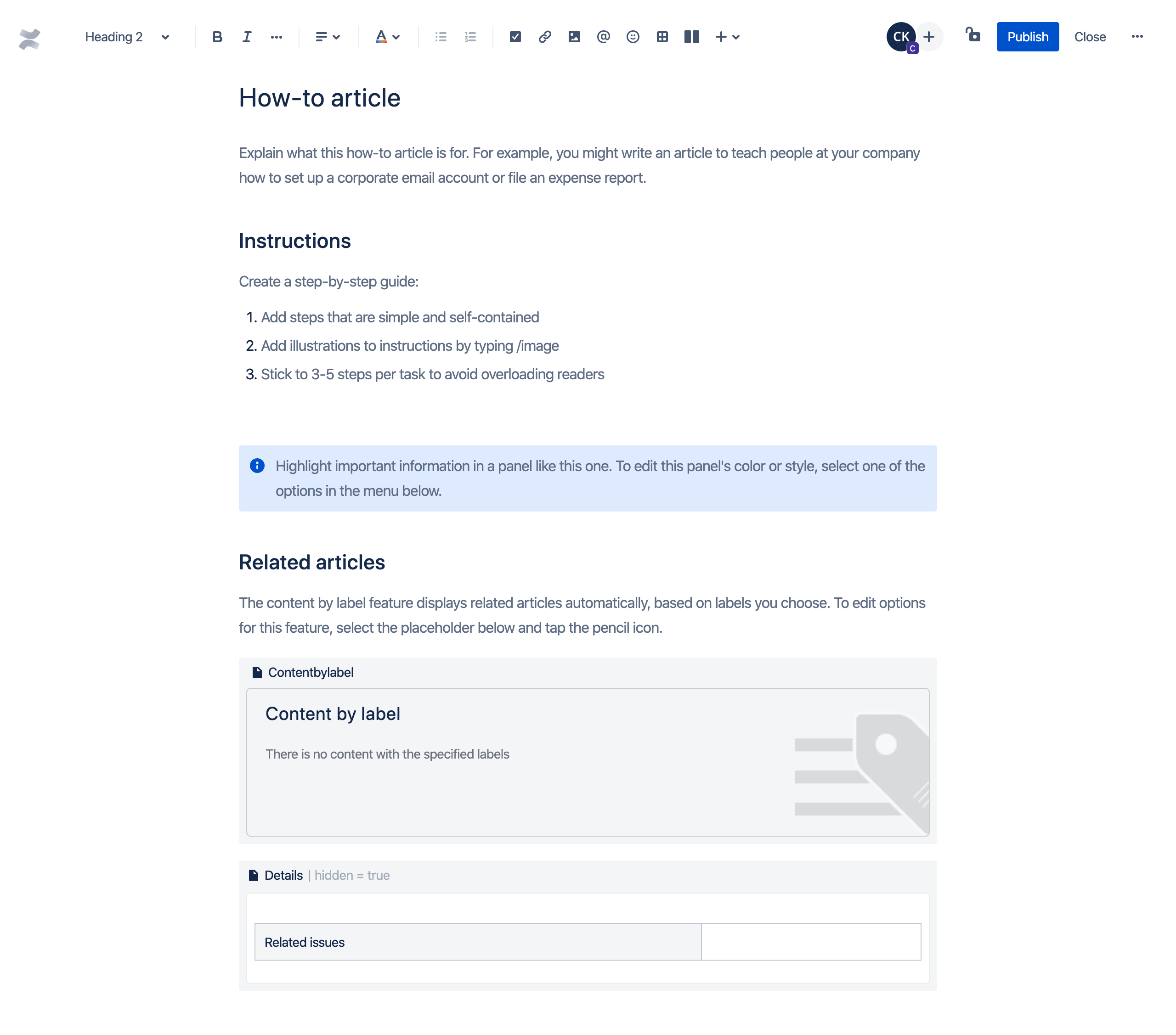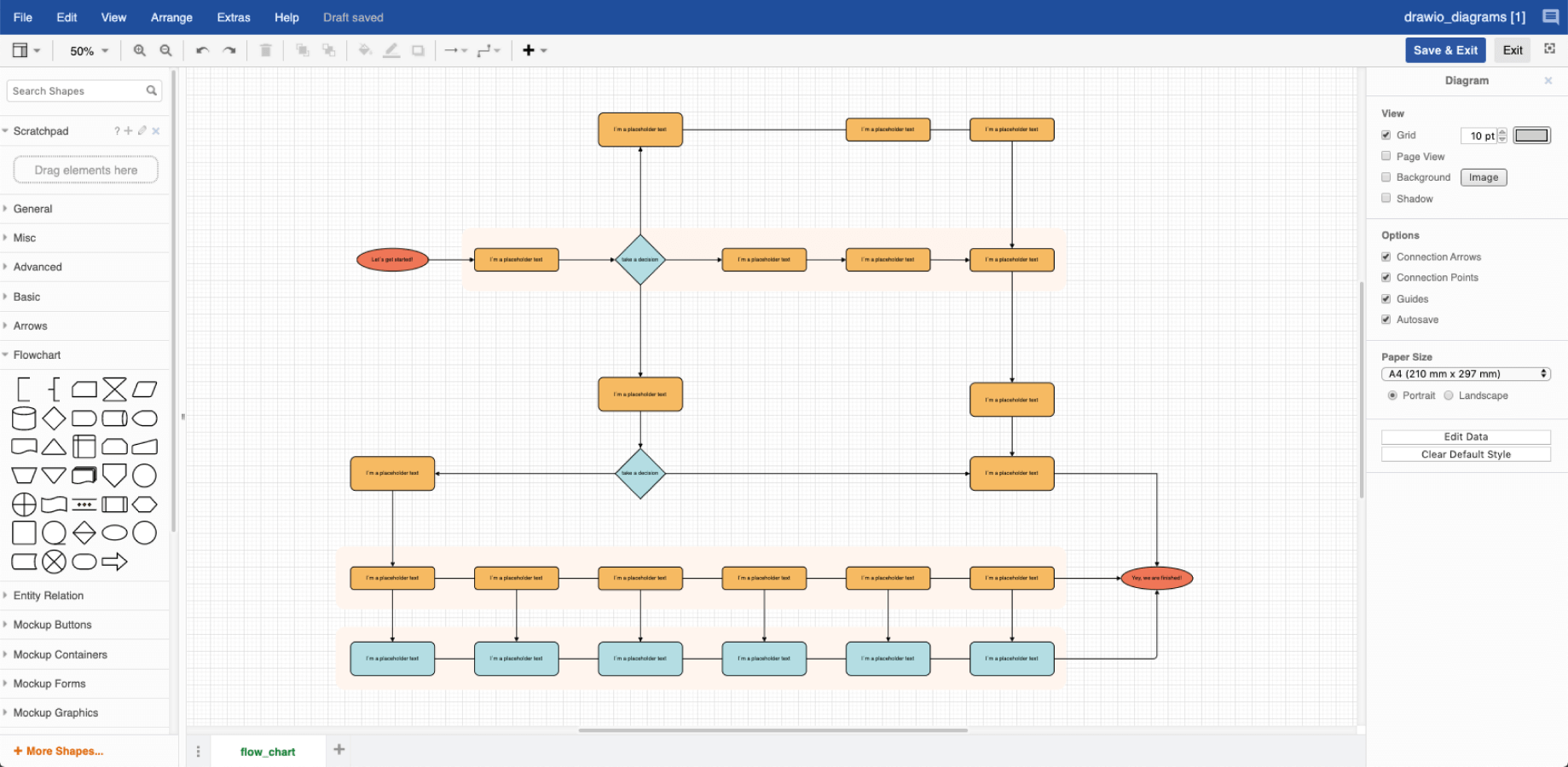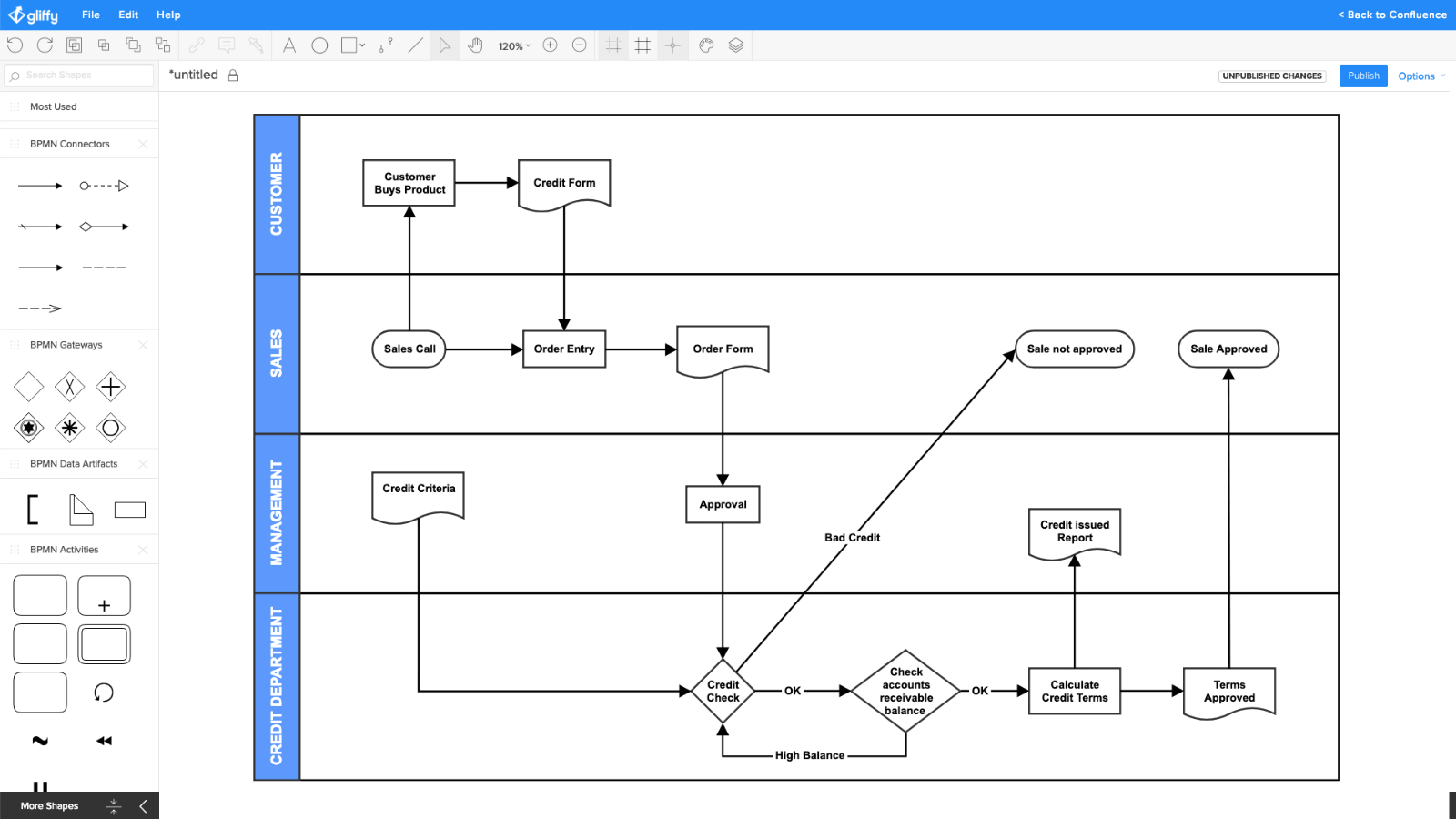The ultimate guide to process documentation
No matter what field you're in, much of the work that happens in your organization can likely boil down to a few repeatable processes. That's why process documentation – recording, in detailed steps, how those processes happen – is so important. When your team gets better at your commonly repeated tasks, everyone is more productive overall.
Think about it: How much more could you get done – and how much would the quality of your results improve – if all of your regular processes were optimized? How much time could you save if more people at your organization knew how to carry out key processes? If you didn’t have to pause other activities to teach those processes to newcomers or contractors? If you eliminated conflicts between team members over the "right" way to do something?
Those are just a few of the reasons to invest time in process documentation. To make the most of your documentation efforts, there's (you guessed it) a process to follow, plus tools that make your work easier and more efficient.
What is process documentation?
Process documentation explains to the user how to carry out a process that's part of the work of your organization. We're not talking about a quick overview here. Process documentation is detailed and step by step. It can also present information in a variety of forms, such as checklists or flow charts.
Process documentation is ongoing. It's always a work in progress. Your organization should regularly revisit its documentation to update and improve the way that processes are captured and explained.
Why do you need process documentation
Shortcomings in knowledge sharing cost large companies $47 million per year. Just 4% of companies report that they consistently document their processes. That means a whole lot of organizations are failing to take advantage of all the benefits of documentation. Taken together, those benefits can be a big boost to productivity and the bottom line. They include:
- Greater efficiency. At the same time process documentation improves quality, it can also lead to cost and time savings. The ICU checklist Gawande writes about saved $2 million in a year.
- Smoother collaboration. Process documentation reduces misunderstanding and confusion because your team members have an agreed-upon standard. There's no debate over whose approach to a process is better.
- Deeper engagement. Documenting processes is just one aspect of a culture of knowledge sharing that can increase employee engagement. In one survey of over 7,000 employees, 80% of respondents said they lack the skills they need for their current roles as well as the future roles they aspire to. While this is obviously a multi-faceted issue, process documentation is one way to provide employees the learning they crave.
- Improved processes. Documentation doesn't just enable more people to carry out a process. It can also lead to improvements in the process itself. Documentation requires stepping back and examining a process closely, and that can reveal opportunities to (for example) work more efficiently that no one had noticed before. Even in cases when you already know that a process isn't working, it may not be clear what's causing the problem until you document the process.
- Faster training. When your processes are documented, you can more efficiently onboard new employees or train contractors to pick up work. Your team members can focus on other things besides repeatedly teaching your processes to others. At the same time, the people being trained feel more confident and empowered when they can refer to documentation instead of asking someone else for help.
- Reduced knowledge gaps. If your team has only one person who always handles a key process, what would you do if they took an unplanned leave of absence? Now consider how much more dire the situation would be if that person left the organization without passing along what they know. When this happens, knowledge can vanish for good. And that takes a heavy toll. Process documentation ensures that knowledge is shared, and saved.
- Higher quality. When best practices for completing a process are recorded for everyone to follow, your team members will consistently get better results with fewer errors. If you've read Dr. Atul Gawande's best-selling book "The Checklist Manifesto," you might remember a particularly striking example of the power of even the most simple process documentation. When a doctor at Johns Hopkins Hospital created a checklist for how to avoid central line infections in the ICU, it prevented 43 infections and saved eight lives in just one year.
The challenges of process documentation
To reap all of those benefits, though, you first have to get past a few common roadblocks to process documentation.
- Knowledge hoarding. Some people don't like to share information because they believe that keeping it to themselves gives them an edge. If you're dealing with a knowledge hoarder, emphasize the benefits of transparency and that it is one of the values of your workplace culture.
- Self-consciousness. On the other hand, people may omit or change details of how they actually do a process because they don't think they are doing it "right." They tell you what they think they're supposed to be doing instead of what they actually do. If you run into this problem, reinforce the idea that the best way to do a process is constantly evolving. Documentation isn't about catching someone messing up. It's about learning and improvement.
- Perfectionism. Yes, process documentation is highly detailed work. But if you start overthinking every detail, you might never complete your documentation. It's okay to start small and simple, especially if you're documenting a process for the first time. Again, remember that you'll be constantly revising and improving your documentation.
- Time constraints. Everyone is busy. If you never seem to get around to tackling process documentation, choose a time in the week and block it on your team's calendar. Or, pick a month or quarter to dedicate to updating process documentation together.
- Lack of faith in documentation. If you've ever tried to decipher badly written instructions when trying to complete a process, you may be convinced that documentation isn't worthwhile, or that it may even do more harm than good. To feel more confident that documentation will pay off, start your efforts with a template and thorough documentation standards.
The steps of process documentation
OK, so now you're ready to start documenting. But where do you even begin? There's actually a lot of planning involved before you start typing out the steps to your process.
- Define the scope. What process are you documenting? What are the starting and ending points? How will the person using your documentation know when the process is complete?
- Understand your audience. To create effective process documentation, you need a clear understanding of the audience that will be using it. What are the characteristics of your documentation users, and what do they need? For example, if you have a lot of experience with a process, but most of the users of your documentation are totally new to it, then you need to write in a different way than you would for your peers.
- Identify the players. If a process involves more than one person, spell out what each person does.
- Gather information. Talk with the team members and other stakeholders who might be involved in the process. You may even want to hold a brainstorming session. If you carry out the process yourself, start documenting it as you perform it. If others carry it out, ask them to take notes as they go through the process.
- Organize. After you've collected all the information, the next step is putting it all in the best order to help the user complete the process. If you're having trouble with this, try putting your steps on index cards or sticky notes (or their online equivalent, if you prefer) that you can rearrange.
- Write. Expand your outline into clear instructions. Before you begin, it's helpful to review some of the key principles of user experience (UX) writing. Weed out extraneous information that could slow down your readers. Use the active voice and clear, unambiguous language. Write in a way that lends itself to user-friendly design. For example, use short paragraphs and bulleted lists.
- Add visuals. Did you know that almost two-thirds of people are visual learners? Explaining the process using visual aids like flow charts or diagrams can make your documentation much easier for users to understand. Does the process you are documenting lend itself to visuals?
- Get feedback. Just because your first draft makes sense to you doesn't mean it will make sense to users. So, before you share your documentation widely, choose some initial reviewers and ask for their comments and suggestions. What parts work well? What parts are unclear or need additional explanation? Your reviewers should include team members who are unfamiliar with the process. Can they use it to complete the process? If so, pat yourself on the back. Mission accomplished! If not, then…
- Revise. Collect the feedback from your reviewers and use it to improve your documentation.
- Re-share. Ask reviewers to try out your revised documentation. Can they complete the process now?
- Distribute. Make your process documentation available to everyone who might need it. The best way to do this is to give your documentation a home in a central repository of knowledge, like Confluence. That way, you know that all team members are using the same version of your documentation and that they can access it wherever they are.
- Plan to revisit. Your work is done for now, but that doesn't mean your process documentation is set in stone. Go ahead and schedule some reminders now to regularly evaluate how well your documentation is working and to consider further updates and improvements.
You can adjust these steps depending on the scale and complexity of the process you're documenting.
Tools and templates for process documentation
Feeling a little daunted by all the stages of process documentation? Don't stress. You're not on your own. Every step of the way in your documentation project, you can use tools and templates to work more efficiently.
Capturing the process
As we mentioned earlier, before you can document a process, you have to gather information about how it works. Sometimes that involves a brainstorming session with multiple people. To make the most of everyone's time and ensure you're recording everything that was discussed, we recommend using brainstorming templates by Mural. Mural's templates guide you through planning a productive brainstorming session, structuring the meeting itself, and capturing the results.
Organizing information
Collecting all the information you need to document a process is a big step. But sorting that information out and putting it in a logical, easy-to-understand format can feel like an even bigger one.
Confluence's how-to article template can help you make sense of it all. A bonus to using a template is that it will create consistency among all your different pieces of process documentation. Users will have an easier time following your instructions if they know what to expect.
 template in Confluence" />
template in Confluence" />
How to article template in Confluence
Adding visuals to process documentation
Visual elements like flow charts or diagrams can convey information faster and more clearly. You don't have to be a graphic artist to add visual aids to your process documentation. Gliffy and Draw.io are popular diagramming tools available as add-ons to Confluence. You can learn more about them and other visual tools at the Atlassian Marketplace.

Sample process diagram courtesy of Draw.io

Sample eCommerce transaction process diagram courtesy of gliffy
Distributing process documentation
We talked earlier about why distribution is such an important part of process documentation. No matter how clear and polished your documentation is, it won't make much of an impact if it's not in the hands of the people who need it. Your team needs a single, centralized source of truth on how to carry out processes. That's why we recommend storing process documentation in Confluence through the Master project documentation template or other project management templates. Its features also make your documentation easy to find and to update.
You're smarter together
When it comes down to it, process documentation isn't just about making sure things get done quickly and in the right way (although that's pretty important, too, of course.) It's about unleashing your team's collective intelligence. When you turn individual knowledge into team knowledge, you open the door to accomplishing more together.
Related resources
- Project Management Resources
- Project Closure Resources

 template in Confluence" />
template in Confluence" /> template in Confluence" />
template in Confluence" />
